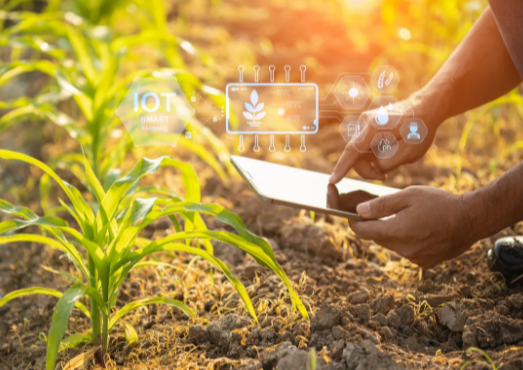The integration of IoT technology in agriculture, known as smart farming, presents significant advancements in farming efficiency and sustainability. By utilizing real-time data and precision agriculture techniques, farmers can enhance resource management and crop yields. However, the adoption of these technologies comes with its own set of challenges and considerations. Understanding the implications and potential of IoT in agriculture could reshape future practices and outcomes in the industry. What lies ahead for this evolving landscape?
Benefits of IoT Technology in Agriculture
As agricultural practices increasingly integrate advanced technologies, the benefits of IoT (Internet of Things) technology in agriculture become evident.
IoT enhances precision agriculture by facilitating real-time crop monitoring, enabling farmers to optimize resource allocation. This technological integration supports sustainable practices, reduces waste, and improves yield quality.
Consequently, IoT empowers farmers to make informed decisions, fostering autonomy and promoting efficient farming techniques.
Key IoT Applications for Smart Farming
While many traditional farming methods rely on manual processes, the integration of IoT applications revolutionizes agricultural practices by providing advanced tools for monitoring and management.
Key applications include precision agriculture for optimized resource use, soil monitoring to assess nutrient levels, livestock tracking for health management, crop management through data analysis, weather forecasting for informed planting, and smart irrigation systems for efficient water usage.
Challenges and Considerations in Implementation
Implementing smart farming solutions presents various challenges that must be navigated to ensure successful adoption and operation.
Key considerations include data security, which is critical to protect sensitive agricultural information, and infrastructure costs, which can be substantial.
Farmers must evaluate these factors carefully to achieve a balance between innovation and financial sustainability, ensuring that the benefits of IoT technologies outweigh the associated risks and expenditures.
Future Trends in Agricultural IoT Solutions
The landscape of agricultural IoT solutions is poised for significant evolution as technological advancements continue to reshape farming practices.
Future trends indicate a stronger integration of precision agriculture with advanced data analytics, enabling farmers to make informed decisions.
Enhanced sensor technologies and machine learning will drive real-time data collection, optimizing resource usage and crop yields while promoting sustainable farming practices across diverse agricultural landscapes.
Read also: IoT and Industrial Automation
Conclusion
In the realm of agriculture, the integration of IoT technology acts as a guiding compass, navigating farmers through the complexities of modern cultivation. Like a vigilant guardian, smart farming solutions illuminate the path toward enhanced productivity and sustainability, ensuring that each seed sown thrives in a data-rich environment. However, as this digital revolution unfolds, it is essential for stakeholders to balance innovation with prudence, cultivating a future where technology and nature harmoniously coexist for the benefit of all.





